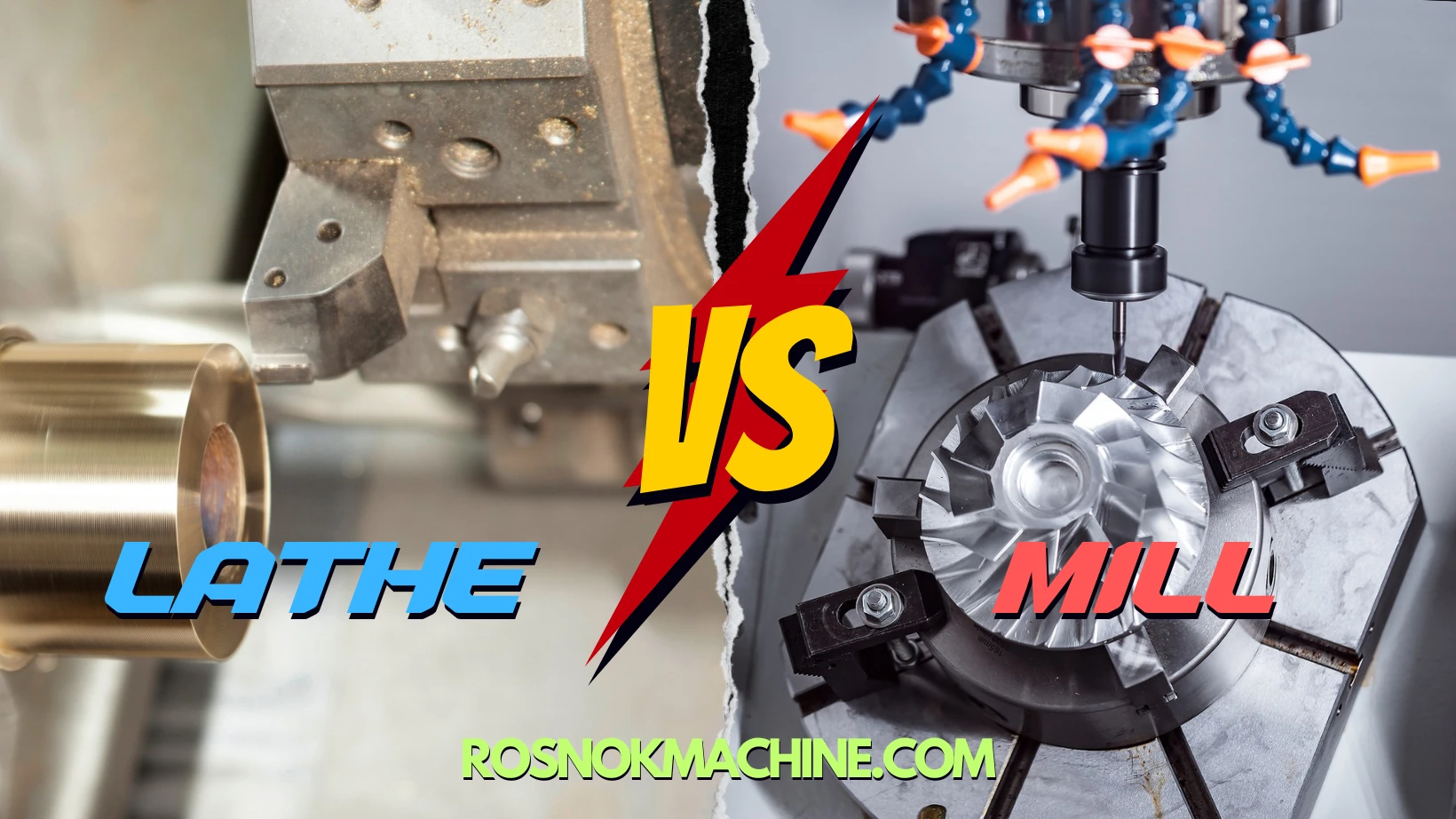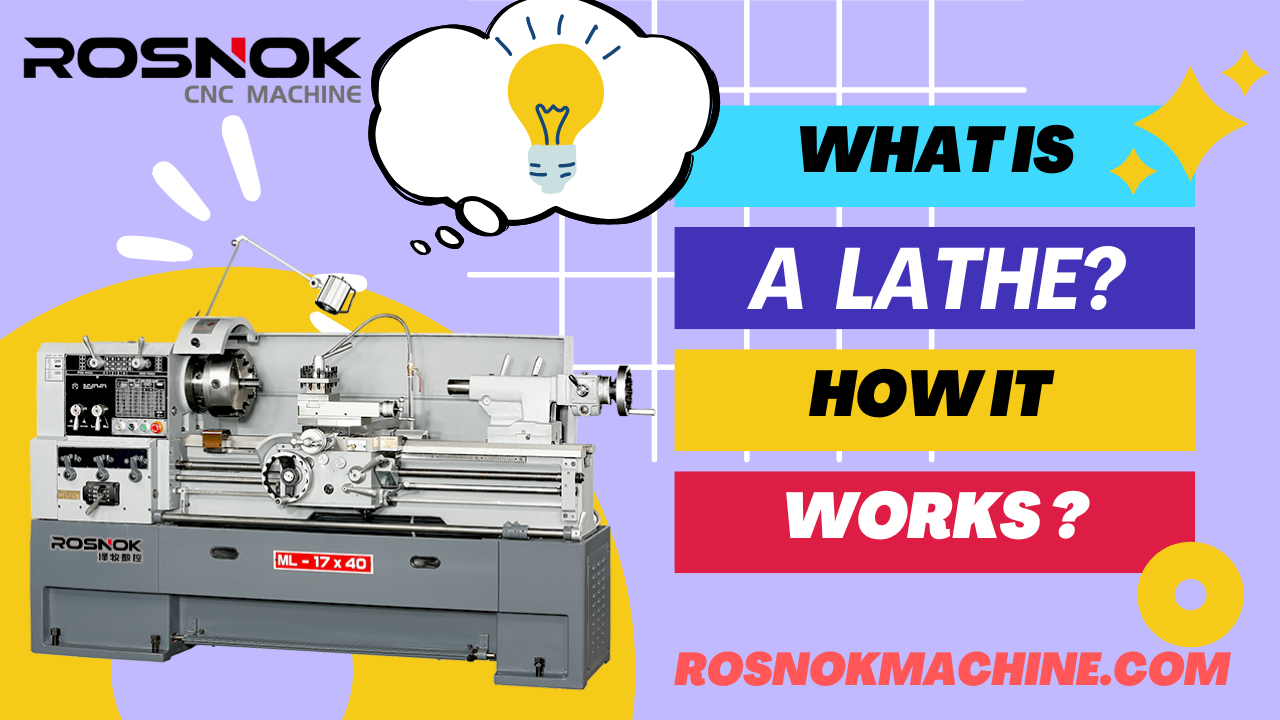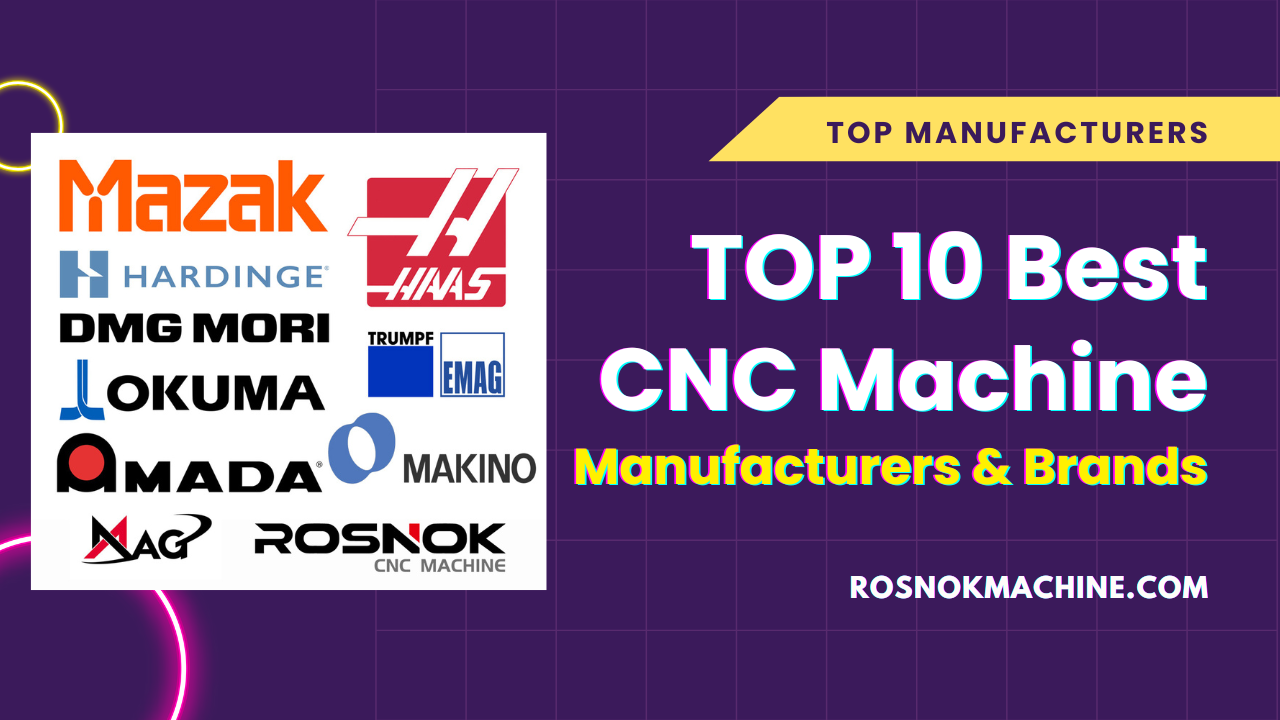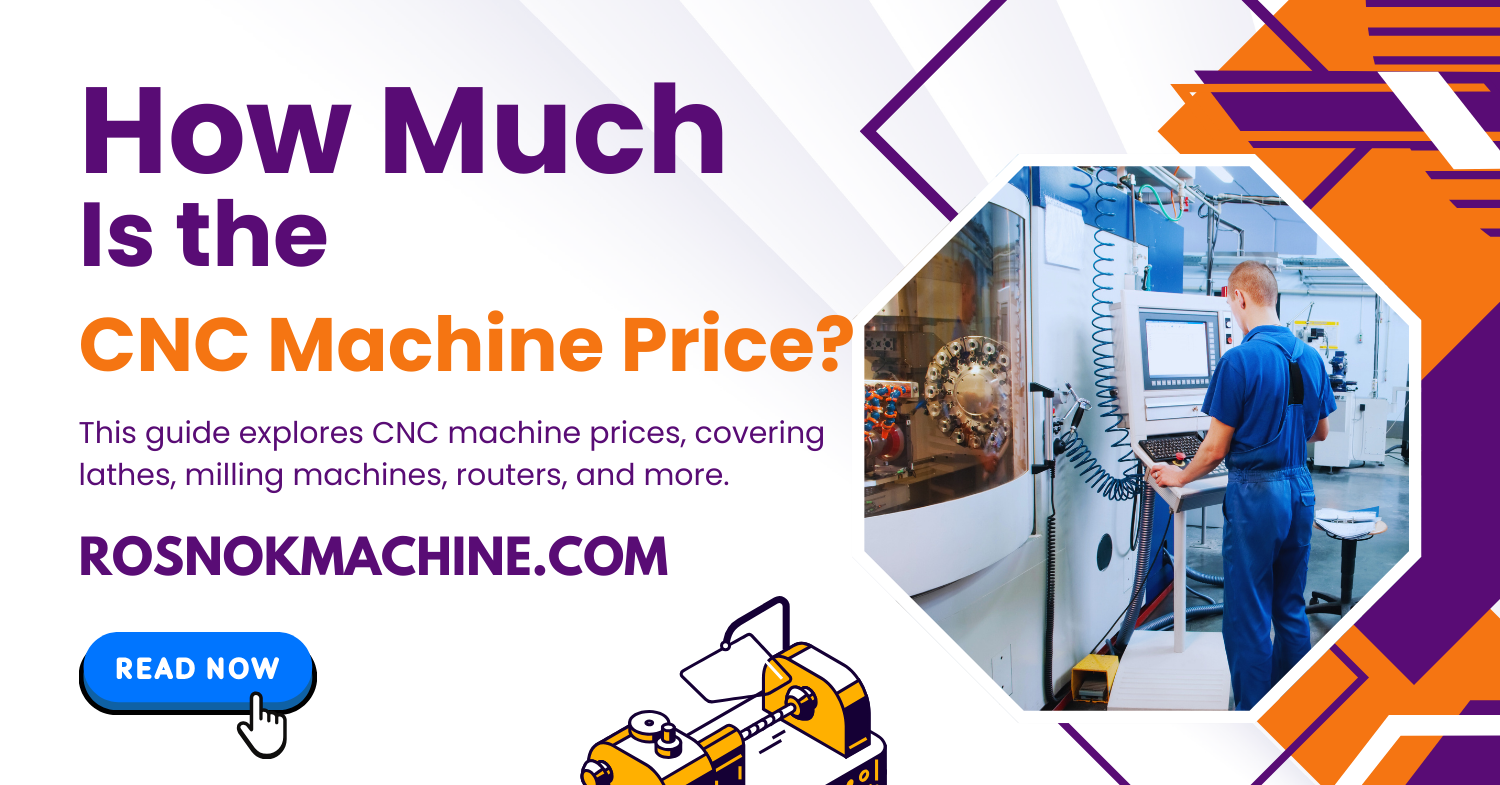Have you ever wondered what is a horizontal machining center? How does it work? How is it different from other machining centers? What are its main components? What kinds of parts is it used to make? What problems in production can it help solve? And when does it become the right choice for a manufacturer?
A horizontal machining center (HMC) is a type of CNC machine tool designed for automated and precise metal cutting. It features a horizontally oriented spindle, a rotary pallet table, and an automatic tool changer. It integrates milling, drilling, boring, and tapping operations into one machine. Known for their ability to machine multiple faces of a workpiece in one setup, they are ideal for machining medium to large parts with complex geometries, especially in batch production. Their design ensures high efficiency, accuracy, and process continuity.
Keep reading to discover how horizontal machining centers work, their key components, practical applications, main advantages, and what role they play in today’s precision machining world.
What is a Horizontal Machining Center?
Definition of Horizontal Machining Center: A horizontal machining center (HMC) is a type of CNC machine tool engineered for automated, high-precision metal cutting. Its defining feature is a horizontally oriented spindle, which positions the cutting tool to approach the workpiece from the side rather than above. This orientation provides better chip evacuation, enhanced cutting stability, and consistent performance during long machining cycles.
Most HMCs are equipped with an automatic tool changer (ATC) and dual-pallet system, allowing tools and workpieces to switch without manual interruption. These systems enable continuous machining across multiple faces of a part in a single setup, significantly reducing idle time and improving overall throughput. The rigid construction and multi-axis capabilities make HMCs ideal for executing milling, drilling, boring, and tapping operations with high repeatability.
Due to their ability to handle complex parts in medium to large sizes, horizontal machining centers are widely adopted in industries that demand precision and volume—such as automotive transmission housings, aerospace structural components, energy equipment, and high-value mechanical parts. Their design supports process continuity, minimizes repositioning errors, and boosts output reliability, making them a staple in modern CNC production environments.
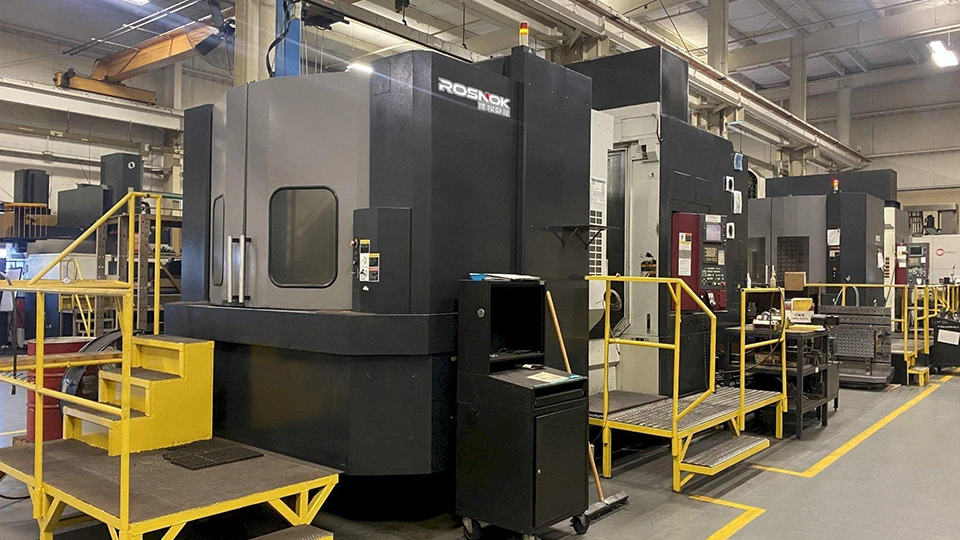
How Does a Horizontal Machining Center Work?
A horizontal machining center works through the integration of multiple subsystems, all controlled by a CNC unit that executes a pre-programmed machining cycle. Once a program is loaded, the machine performs each task automatically—precisely and repeatedly—without the need for manual adjustments during the process.
The operation begins when the CNC controller reads the G-code instructions, which define the tool paths, feed rates, spindle speeds, and sequence of operations. These digital commands are sent in real time to the spindle motor, axis drives, and other systems to coordinate every movement and cutting action.
Once the cycle starts, the spindle rotates at the programmed speed while the machine’s axes position the tool along the defined path. The system performs cutting operations—such as milling, drilling, or tapping—in a precise sequence. Coolant is applied automatically to manage heat and clear away chips. Tool changes are triggered as specified in the program, allowing different operations to proceed in succession without interruption.
For machines equipped with a pallet system, workpiece handling is also automated. While one pallet is being machined, the other can be loaded externally. When the active cycle ends, the pallets switch automatically and the next cycle begins—minimizing idle time and enabling continuous production.
This high level of automation allows a horizontal machining center to execute complex machining tasks with speed, accuracy, and consistency. The coordination between its control system, motion components, and auxiliary functions ensures stable output over long production runs.
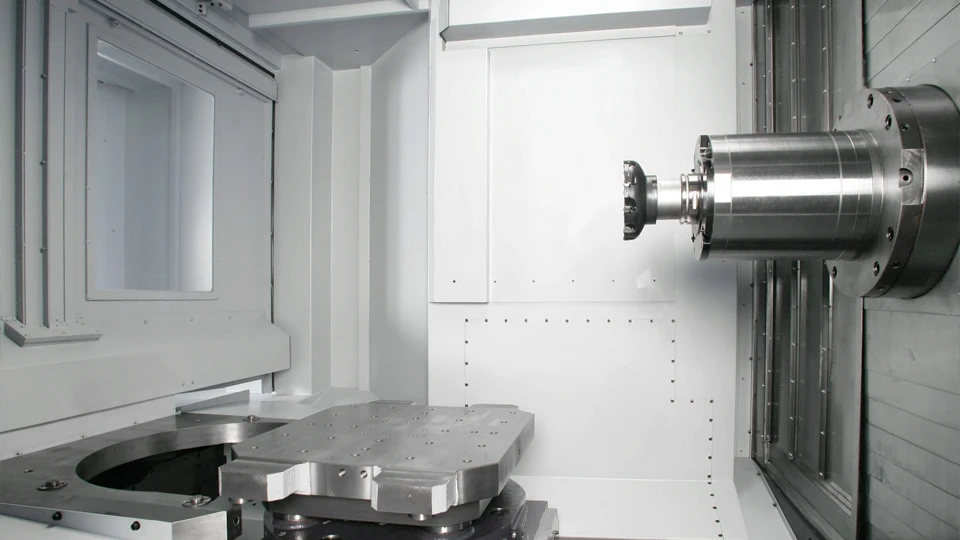
Key Components of a Horizontal Machining Center
Behind every horizontal machining center is a combination of precision-engineered components working in harmony. These parts are designed not only to perform complex machining tasks but to do so reliably, consistently, and with minimal operator input. In this section, we break down the critical structures that give an HMC its speed, accuracy, and efficiency.
Machine Base and Structural Frame
The machine base forms the foundational support structure of a horizontal machining center. Typically made from high-grade cast iron or reinforced steel, it provides the rigidity and weight necessary to absorb vibrations and resist deformation during heavy cutting. A well-designed base ensures stable alignment of all components, helping maintain precision over long production cycles. Its mass also contributes to thermal stability, reducing dimensional drift caused by temperature fluctuations. As the backbone of the entire machine, the structural frame plays a critical role in delivering accuracy, durability, and reliable performance under demanding conditions.
Horizontal Spindle
The horizontal spindle is the core feature that differentiates HMCs from vertical machining centers. Oriented parallel to the machine base, this spindle configuration allows for side-entry cutting and supports long tools with greater rigidity. It improves vibration control during deep or heavy cuts and enables gravity-assisted chip removal—an essential advantage for long-term accuracy and surface quality. The spindle is usually powered by a high-torque motor and supported by precision bearings to ensure smooth, consistent operation even under load.
Worktable & Rotary Axis
The worktable in an HMC is mounted on a rotary B-axis, allowing the workpiece to rotate for multi-face machining. This table often works in conjunction with a dual-pallet system, enabling one pallet to be machined while the other is being loaded or unloaded. Rotary movement is usually incremental (indexing) or continuous, depending on the application. The structure provides flexibility for positioning the part at different angles, helping to complete complex features in a single setup.
Guideways, Ball Screws & Motors
Linear guideways provide the motion path for each axis of the machine, offering smooth and accurate movement. These guides reduce friction and wear, allowing faster acceleration and more stable cuts. Ball screws convert motor rotation into precise linear travel and are preloaded to eliminate backlash. Coupled with high-performance servo motors, this motion system ensures repeatable positioning and smooth interpolation—critical for tight tolerances and consistent part geometry.
Cooling & Chip Evacuation System
To maintain stable performance during long machining cycles, HMCs are equipped with robust cooling and chip management systems. Flood coolant systems and through-spindle cooling help manage heat buildup, especially during high-speed or deep cuts. Meanwhile, inclined or auger-style chip conveyors remove debris from the cutting area, preventing re-cutting and tool damage. This not only extends tool life but also reduces downtime between cycles, supporting continuous operation.
CNC Control System
The CNC control unit is the command center of the machine. It reads pre-loaded G-code programs and sends real-time instructions to every axis, tool change mechanism, and auxiliary system. Advanced control units support features like tool compensation, adaptive feed rate, and real-time error detection. User-friendly interfaces allow operators to input programs, monitor machining status, and manage diagnostics—all without interrupting the cutting cycle.
Tool Magazine & Automatic Tool Changer (ATC)
The tool magazine stores all the tools needed for a job, while the ATC system automatically switches tools as instructed by the program. Tool magazines vary in size—ranging from 20 to over 100 slots—and may be carousel or chain type. The ATC arm retrieves the correct tool, aligns it with the spindle, and swaps it in seconds. This system enables seamless multi-step operations and drastically reduces cycle time between processes.
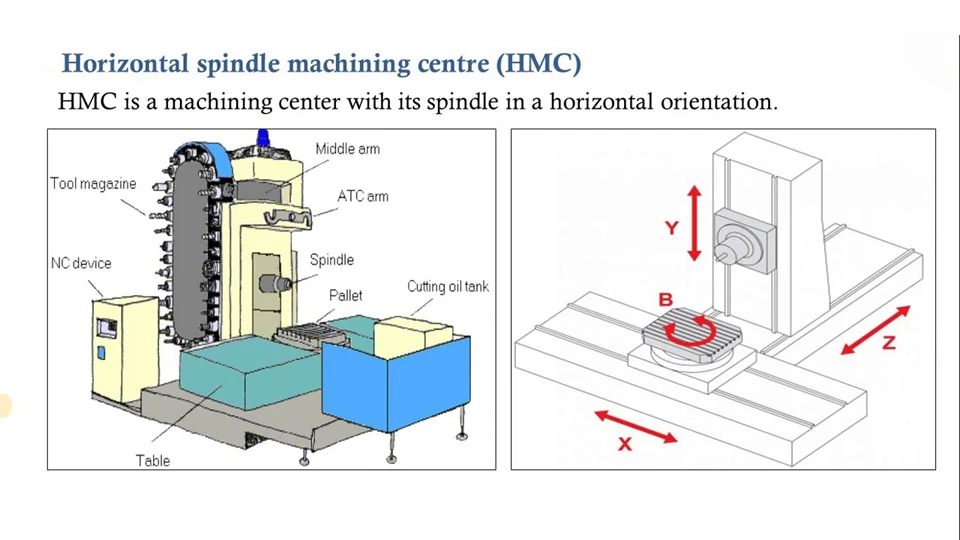
What Operations Can It Perform?
A horizontal machining center is capable of performing multiple metalworking operations within a single setup. These operations are not only fundamental to part production but also benefit from the HMC’s multi-axis structure and automatic tool handling. Below are the four core machining tasks typically handled by HMCs, each suited to specific materials, geometries, and manufacturing needs.
Milling
Milling is the most common and versatile operation performed on a horizontal machining center. It involves removing material using a rotating cutting tool, usually across flat or contoured surfaces. HMCs excel in face milling, side milling, and slot cutting, especially when multiple sides of a part must be processed without re-clamping. This operation is ideal for steel, cast iron, aluminum, and even titanium, making it suitable for automotive housings, machinery bases, and structural aerospace components. The horizontal spindle layout allows more stable engagement during heavy milling cuts, enhancing both surface finish and dimensional control.
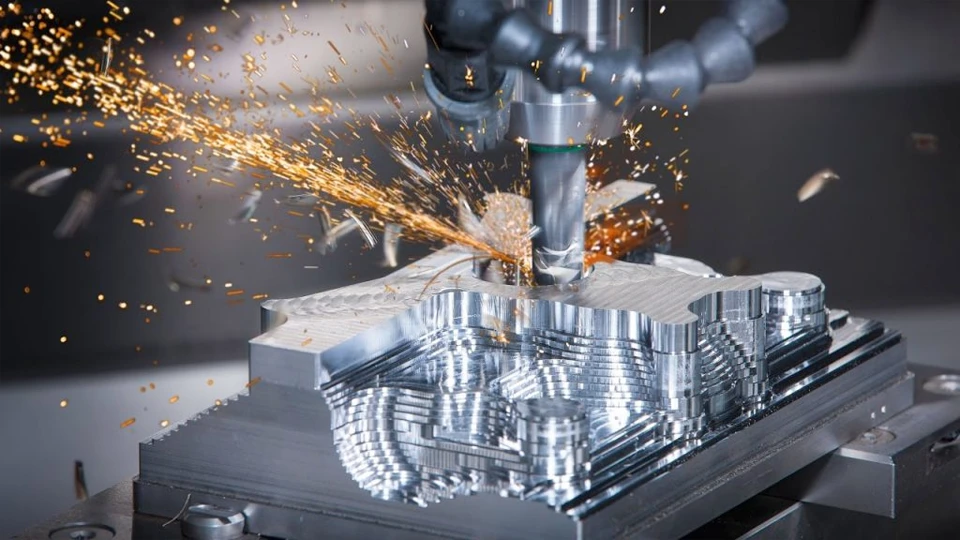
Drilling
Drilling creates round holes by feeding a rotating drill bit into the material. In an HMC, drilling is often combined with rigid tapping or counterboring in the same cycle. The use of precise CNC control allows for accurate hole placement, consistent depths, and programmable pecking cycles. HMCs handle drilling in a wide range of materials, from aluminum blocks to hardened steel parts. Common applications include bolt hole patterns on engine casings, cooling channels in hydraulic components, and fastener points in heavy machinery castings.
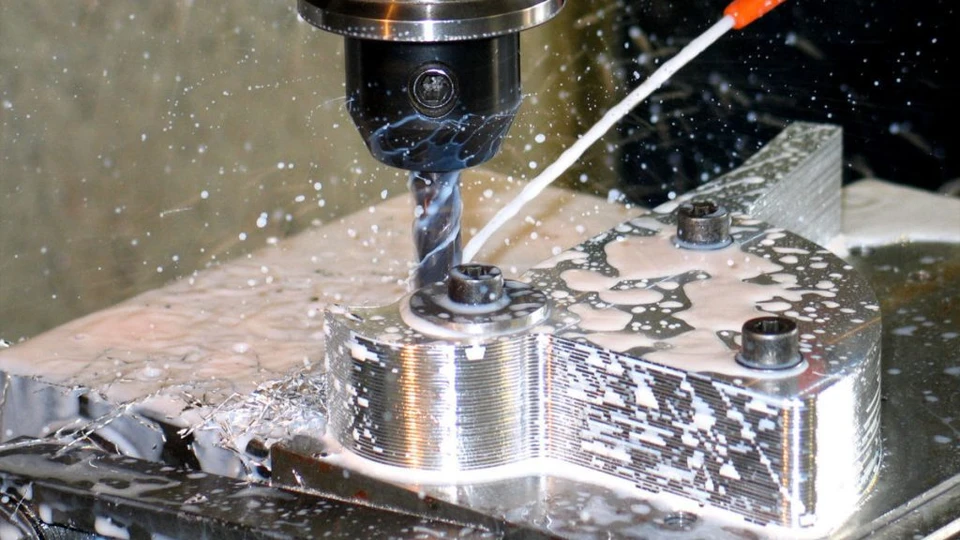
Boring
Boring is used to enlarge existing holes to achieve tighter tolerances and improved surface quality. Horizontal machining centers are especially suited for this operation because the spindle alignment and machine rigidity ensure concentricity and dimensional precision. Boring is frequently applied to components that require high-precision holes, such as gearboxes, bearing housings, and hydraulic valve bodies. The operation is most commonly performed in steel and cast iron, where internal features must meet strict alignment and finish standards.
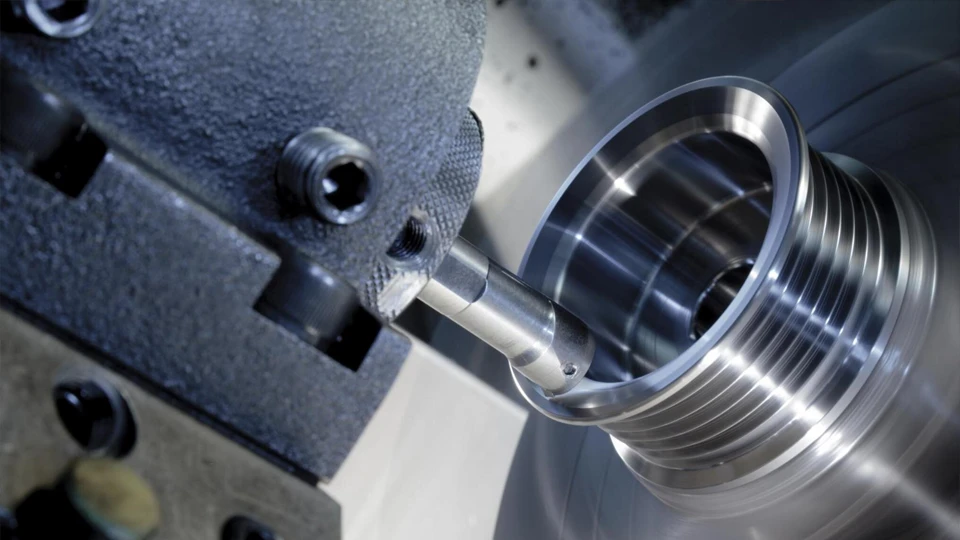
Tapping
Tapping creates internal threads in pre-drilled holes, allowing screws or bolts to be fastened securely. With the help of a rigid tapping cycle, HMCs perform this operation at high speed with accurate depth control and minimal risk of tap breakage. Tapping is widely used in parts that require assembly, such as engine covers, machine frames, or control enclosures. Materials range from aluminum and mild steel to stainless steel, provided proper tooling and feed rates are selected.
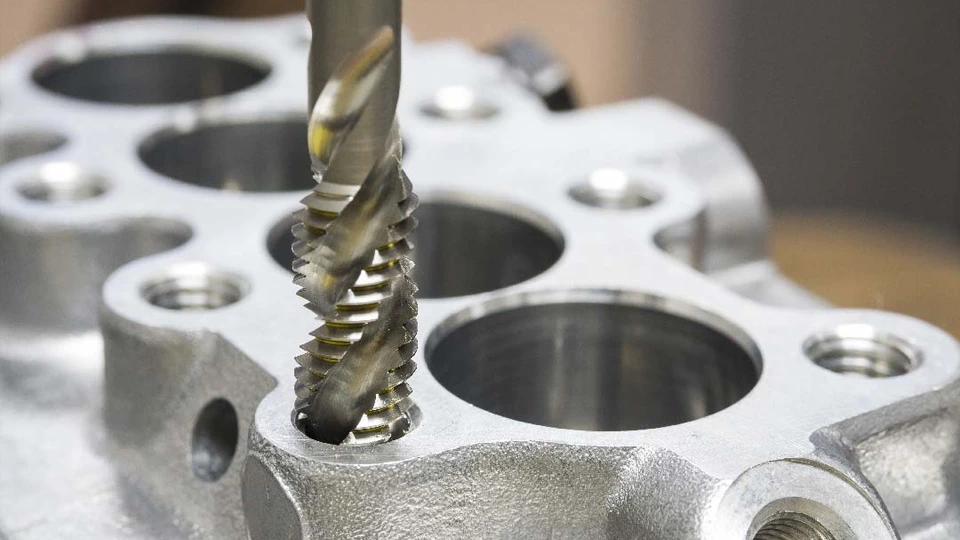
Additional Operations
Beyond milling, drilling, boring, and tapping, horizontal machining centers can also perform several advanced or auxiliary operations that enhance part quality and functionality. Reaming is used to finish holes with tight tolerances and fine surface finishes, commonly applied in bearing seats or precision dowel locations. Countersinking and counterboring prepare holes for fasteners, allowing bolts or screws to sit flush with or below the part surface. Thread milling offers an alternative to tapping, especially for larger or harder materials, providing better control and chip evacuation. Chamfering and deburring are also frequently integrated into the cycle to remove sharp edges and improve assembly fit. These additional capabilities make HMCs suitable for producing high-complexity parts in fewer setups.
Horizontal vs. Vertical Machining Center
When choosing between a horizontal and vertical machining center, it’s important to understand their fundamental differences. Both machines serve the same core purpose—precision metal cutting (especially milling)—but they differ greatly in design, performance, and ideal use cases. Below is a direct comparison to help clarify how horizontal machining centers (HMCs) stack up against vertical machining centers (VMCs).
Structural Differences
The most obvious difference lies in the spindle orientation. In a vertical machining center, the spindle is mounted vertically and cuts downward into the workpiece. In contrast, a horizontal machining center features a spindle mounted parallel to the machine base, cutting from the side. This change affects everything from how the part is positioned to how chips are removed. VMCs typically use a stationary table, while HMCs often use a rotary B-axis and pallet system to support multi-face machining. The posture of the machine also influences how gravity interacts with cutting forces and chip flow—factors that significantly affect machining dynamics.
Performance Comparison
Horizontal machining centers generally offer better performance in terms of chip evacuation, tool life, and cycle efficiency. The horizontal orientation allows chips to fall away from the cutting area, keeping the tool path clear and reducing heat buildup. HMCs also support automated pallet changers, which increase uptime by allowing new workpieces to be preloaded while machining is in progress. On the other hand, vertical machines are simpler, easier to set up, and often more cost-effective for low-volume work. However, they may require more frequent tool changes and manual repositioning when working with complex parts, leading to longer setup times and reduced consistency.
When to Choose HMC over VMC
A horizontal machining center is the better choice when your production involves high part volumes, complex geometries, or multi-face machining in a single setup. It’s also ideal when minimizing downtime is crucial, such as in automotive or aerospace part production. The investment cost is higher, but the returns in efficiency, repeatability, and automation can offset the initial expense. Vertical machining centers are more suitable for small-batch jobs, simpler part profiles, or shops with limited floor space and budget. In essence, if your operation demands speed, accuracy, and non-stop machining, the horizontal configuration provides a long-term advantage.
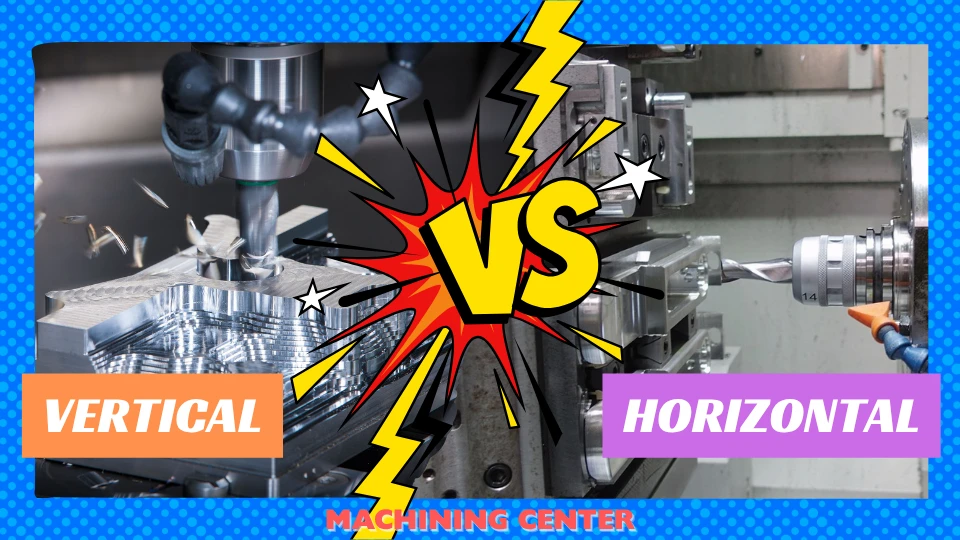
What Are the Advantages of a Horizontal Machining Center?
Horizontal machining centers offer several performance advantages that make them ideal for high-volume and precision manufacturing. Their structural design and automation capabilities allow manufacturers to maximize efficiency while maintaining tight tolerances across complex parts. Below are the key benefits that distinguish HMCs in real-world production environments.
Multi-Face Machining in One Setup
One of the most practical advantages of a horizontal machining center is the ability to machine multiple sides of a part in a single setup. With the help of a rotary B-axis table, the workpiece can be indexed to different orientations without manual repositioning. This reduces the need for repeat clamping and alignment, minimizing setup errors and cycle time. For parts with features on multiple planes—such as manifolds, valve bodies, or engine blocks—this capability improves geometric consistency and shortens production time significantly.
High Production Efficiency
Horizontal machining centers are designed for continuous operation with minimal downtime. Equipped with automatic tool changers and dual-pallet systems, they allow new parts to be staged while machining is still in progress. This parallel workflow reduces idle time between cycles and supports lights-out manufacturing. In batch production or automotive part machining, this translates directly to more parts per shift, lower labor costs, and higher throughput—all without sacrificing precision.
Better Chip Evacuation
Thanks to the horizontal spindle orientation, chips naturally fall away from the cutting area under the influence of gravity. This helps prevent chip accumulation, which can otherwise cause tool deflection, overheating, or surface defects. Efficient chip evacuation also reduces the load on coolant systems and improves visibility in the cutting zone. This is particularly important in deep-pocket machining or high-speed operations where uninterrupted material removal is critical.
Improved Tool Life & Accuracy
The rigid construction and optimized thermal balance of horizontal machining centers contribute directly to longer tool life and more consistent part accuracy. Because chips are cleared quickly and heat is dispersed evenly, tools maintain sharper edges over more cycles. The horizontal design also reduces vibration during heavy cutting, which protects spindle bearings and enhances surface finishes. These factors are essential when working with hard materials, tight tolerances, or extended production runs.
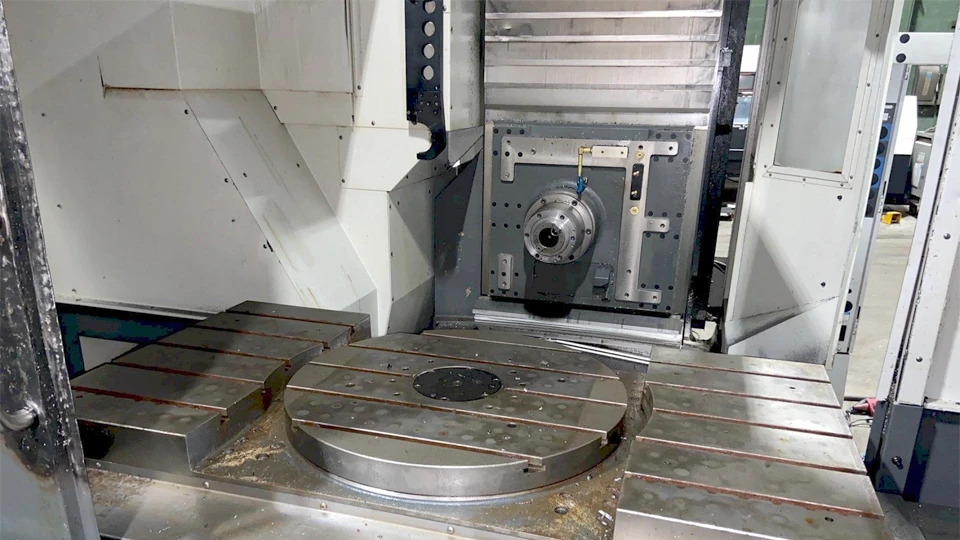
Typical Applications and Industries
Horizontal machining centers are used across a wide range of industries where high accuracy, efficient multi-face machining, and repeatability are critical. Their design makes them particularly well-suited for medium to large complex parts, batch production, and high-precision components. Below are the most common industries where HMCs deliver clear production advantages.
Automotive Parts
In the automotive industry, horizontal machining centers are widely used for components like engine blocks, transmission housings, and suspension brackets. These parts often require machining on multiple surfaces with tight tolerances and high repeatability. HMCs allow for complete multi-face processing in a single setup, reducing cycle times and alignment errors. Their ability to integrate drilling, milling, and tapping operations makes them ideal for high-volume production lines where efficiency and consistency are paramount.
Aerospace Components
Aerospace parts often feature complex geometries, internal cavities, and demanding material requirements such as titanium or high-strength aluminum alloys. Horizontal machining centers provide the rigidity, axis flexibility, and chip management necessary for manufacturing components like fuselage frames, landing gear supports, and turbine housings. With the aid of rotary tables and automated tool changers, HMCs can achieve the precision and surface finish required in flight-critical applications while supporting reduced setup frequency and minimal operator intervention.
Energy & Heavy Equipment
In sectors like oil & gas, power generation, and industrial machinery, HMCs are used for machining large, heavy-duty parts such as valve bodies, pump casings, and compressor housings. These parts are often made from cast iron, stainless steel, or specialty alloys, requiring stable platforms for deep cuts and long machining cycles. Horizontal spindle orientation enables effective chip evacuation and consistent cooling—both essential for preserving tool life and achieving dimensional accuracy during large part processing.
Precision Parts for Other Sectors
Beyond heavy industry, horizontal machining centers are also employed in fields like medical equipment, electronics, and instrumentation manufacturing. Applications include precision enclosures, implant fixtures, and sensor housings—components that demand tight tolerances, fine surface finishes, and repeatable accuracy. HMCs support low-to-mid batch sizes while maintaining machining stability, making them a reliable choice for manufacturers seeking consistent quality across varied complex parts.
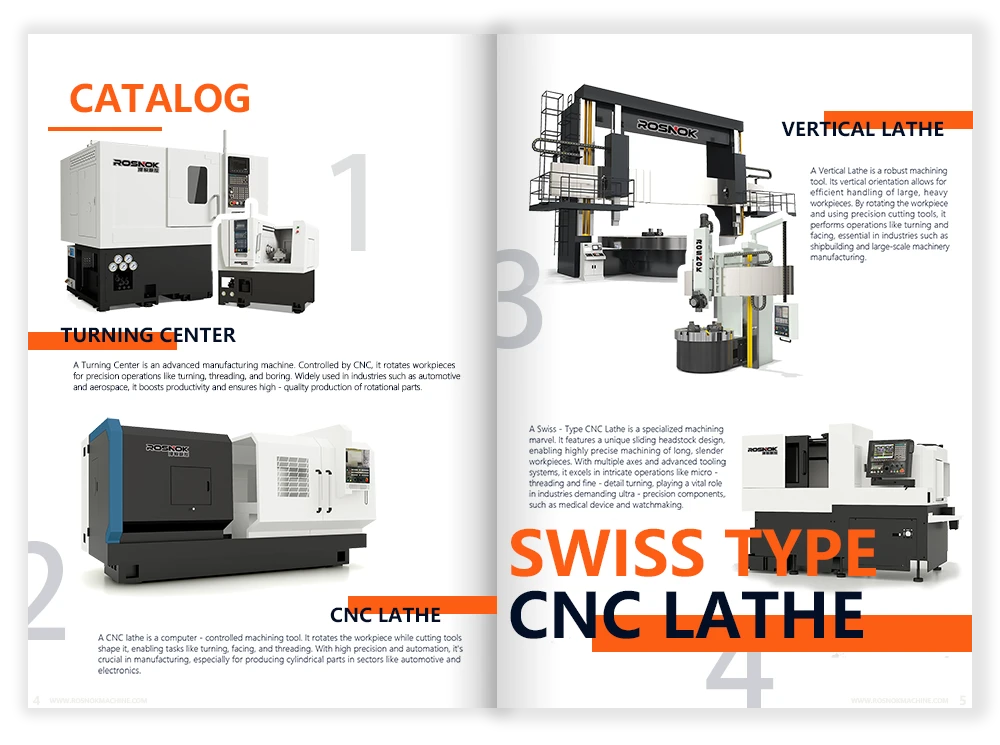
Is a Horizontal Machining Center Right for You?
Investing in a horizontal machining center is a strategic decision that should be based on clear operational needs. To determine if it’s the right fit, consider the scale of your production, the complexity of your parts, available resources, and long-term return on investment. Here are three key evaluation points to guide your decision-making.
Production Scale & Part Complexity
Horizontal machining centers are best suited for medium to high-volume production runs and parts with complex geometries or multi-face features. If your components require frequent reorientation on a vertical machine, or involve deep cavities and precision hole alignments, an HMC can dramatically reduce setup time and improve consistency. Batch jobs in automotive, aerospace, or hydraulic systems typically benefit the most. For shops producing simple, low-volume parts, however, a vertical machining center may remain the more cost-effective option.
Budget & Total Cost of Ownership
While the initial purchase price of a horizontal machining center is generally higher than that of a vertical model, the long-term gains often justify the investment. HMCs reduce labor hours through automation, minimize rework through better accuracy, and increase output per shift. When calculating ROI, factor in cycle time reduction, tool longevity, lower defect rates, and the value of unattended operation. For businesses scaling production or moving toward lean manufacturing, the total cost of ownership favors HMCs in the long run.
Factory Layout & Operator Capability
Before adopting an HMC, assess your facility’s floor space, infrastructure, and staff readiness. Horizontal machining centers typically have a larger footprint and may require additional overhead clearance for pallet changers. Operators and programmers may also need additional training to manage the machine’s advanced features and multi-axis controls. However, modern HMCS often come with intuitive interfaces, and most suppliers offer support packages to help ease the transition. Ensuring your team is equipped to handle the technology will maximize your return and shorten the learning curve.
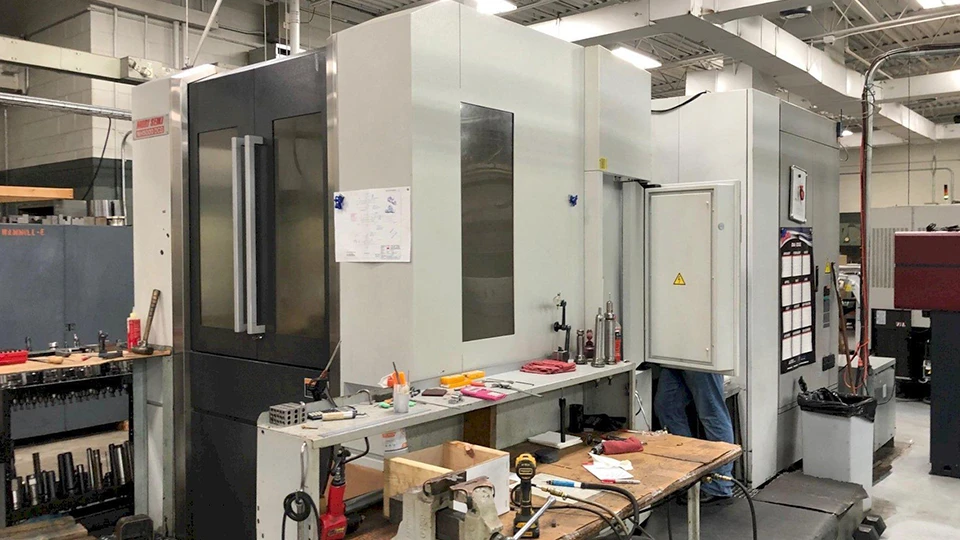
Maintenance Tips for Horizontal Machining Centers
To keep a horizontal machining center running at peak performance, regular maintenance is essential. Proper upkeep not only extends machine life but also ensures consistent part quality, minimizes downtime, and protects your investment. Here are key maintenance tasks every operator should follow to keep an HMC in optimal condition.
1. Lubrication Checks
Maintain a routine schedule for checking and refilling lubrication systems. Guideways, ball screws, and bearings require continuous lubrication to prevent wear and ensure smooth motion. Most modern HMCs come equipped with automated lubrication systems, but manual verification of fluid levels and line integrity is still necessary.
2. Clean Chip Evacuation Systems
Horizontal machining centers produce large volumes of chips. Clean chip conveyors, hoppers, and filters daily to prevent clogging and overheating. Check that the coolant system is circulating properly and that no debris is blocking flow to the spindle or cutting area.
3. Inspect Spindle Condition
Monitor spindle temperature, vibration, and noise for early signs of wear or misalignment. Schedule periodic inspections using dial indicators or vibration analyzers to catch bearing degradation or runout issues before they impact precision.
4. Maintain the Tool Magazine and ATC
Keep the automatic tool changer clean and dry. Inspect the grippers and sensors for debris, misalignment, or mechanical wear. Ensure tools are seated correctly in the magazine and that the system indexes smoothly during tool changes.
5. Calibrate Critical Axes
Perform regular calibration of X, Y, and Z axes to maintain geometric accuracy. Use laser interferometers or ballbar tests to identify positioning errors and correct them before they compromise part quality.
6. Daily Visual and Functional Checks
Before each shift, operators should perform a quick walkaround inspection: check for oil leaks, loose cables, or unusual noises during startup. Confirm that emergency stops, interlocks, and software alarms are functioning correctly.
By following these practical maintenance tips, machine owners can maximize uptime, reduce repair costs, and maintain high-quality production standards. A well-maintained horizontal machining center is a reliable asset in any manufacturing environment.
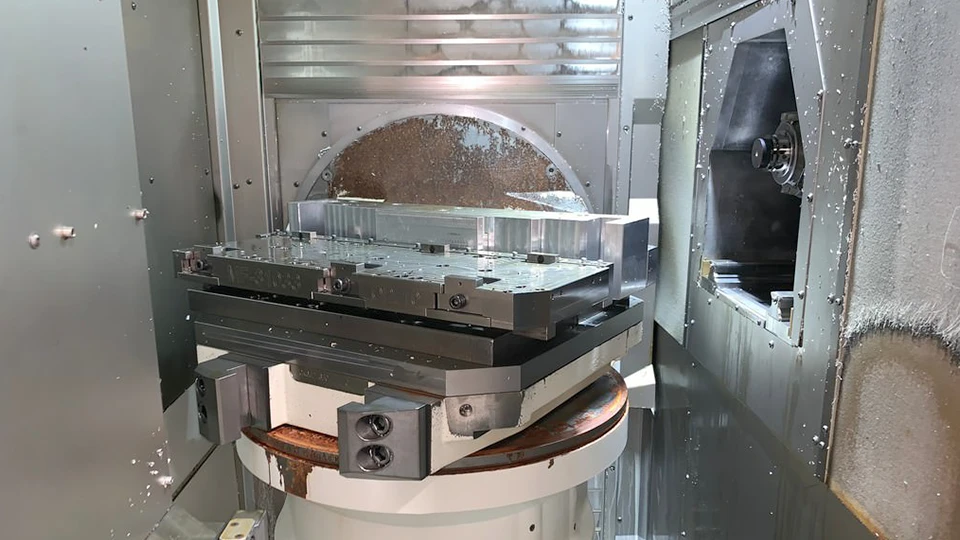
Future Trends in Horizontal Machining Technology
As manufacturing demands evolve, horizontal machining centers are undergoing significant technological upgrades to stay competitive. From automation to sustainability, these machines are being redesigned to handle new materials, improve energy efficiency, and integrate seamlessly into digital factory environments. Here are five major trends shaping the future of horizontal machining technology.
1. Deeper Integration of Automation
Future-ready horizontal machining centers will continue to expand their automation capabilities. This includes the adoption of robotic loading systems, automatic part handling, and tool monitoring software. By minimizing manual intervention, manufacturers can achieve lights-out production, reduce labor dependency, and enhance output consistency.
2. Expansion into 5-Axis Capabilities
More HMCs are being designed with rotary tilt tables or built-in swiveling heads to support simultaneous 5-axis machining. This allows manufacturers to process complex geometries, such as aerospace or medical parts, in fewer setups. As multi-surface parts become more common, the need for 5-axis flexibility will continue to grow.
3. IoT Connectivity and Remote Monitoring
With the rise of Industry 4.0, horizontal machining centers are increasingly equipped with sensors and communication modules. This enables real-time condition monitoring, predictive maintenance, and remote diagnostics. Operators and managers can track spindle loads, temperature trends, and usage statistics to make informed decisions and avoid unplanned downtime.
4. Focus on Energy Efficiency and Sustainability
Environmental considerations are becoming more critical in machine design. Newer HMC models incorporate energy-saving servo drives, regenerative braking, and smart standby modes to reduce power consumption. In addition, manufacturers are optimizing coolant systems and chip recycling processes to support cleaner, more sustainable operations.
5. Advanced Capabilities for Hard Material Machining
As industries move toward harder alloys and heat-resistant materials, horizontal machining centers must evolve to meet higher performance demands. Innovations such as high-torque spindles, adaptive feed control, and vibration-dampening structures are being integrated to ensure stability, tool life, and surface quality even under heavy-duty cutting conditions.
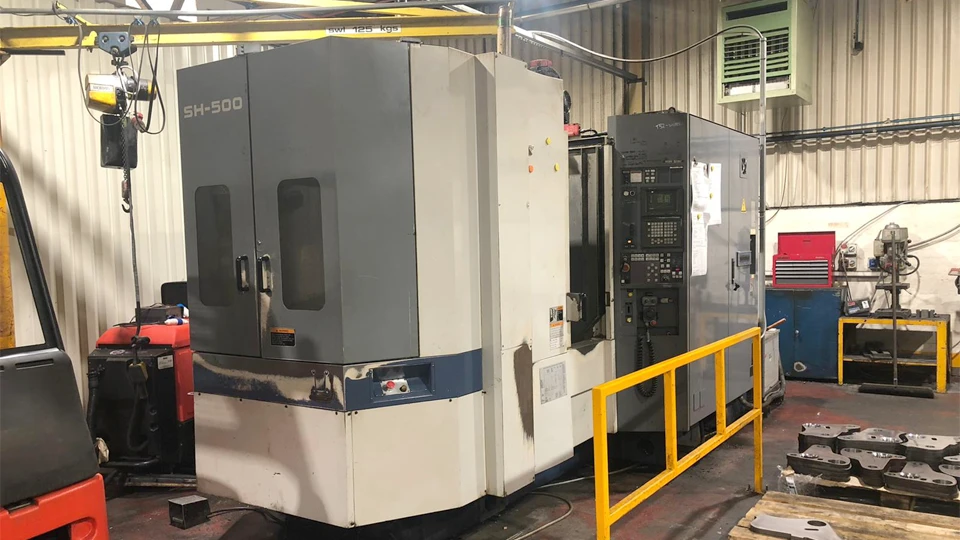
Conclusion: What is a Horizontal Machining Center?
The horizontal machining center stands as a cornerstone of precision-driven CNC manufacturing. Its horizontal spindle layout, multi-face machining capability, and automated tool and pallet systems allow for fast, stable, and highly accurate processing of complex, medium-to-large parts. By minimizing setups and enabling continuous operation, HMCs consistently deliver higher output and tighter tolerances—particularly in demanding industries like automotive, aerospace, and energy. As machining challenges grow in complexity and scale, understanding and applying the strengths of horizontal machining centers has become essential for staying competitive.
For businesses seeking to integrate high-precision horizontal machining into their operations, choosing the right equipment makes all the difference. That’s why working with experienced CNC manufacturers who specialize in automated, multi-axis machine tools is essential. With deep technical expertise and a full range of horizontal machining center solutions, Rosnok delivers reliable, performance-oriented machines tailored to the needs of industries worldwide. Whether you’re upgrading existing lines or scaling up for complex production, consider partnering with a supplier who understands both your machining challenges and your long-term goals.



